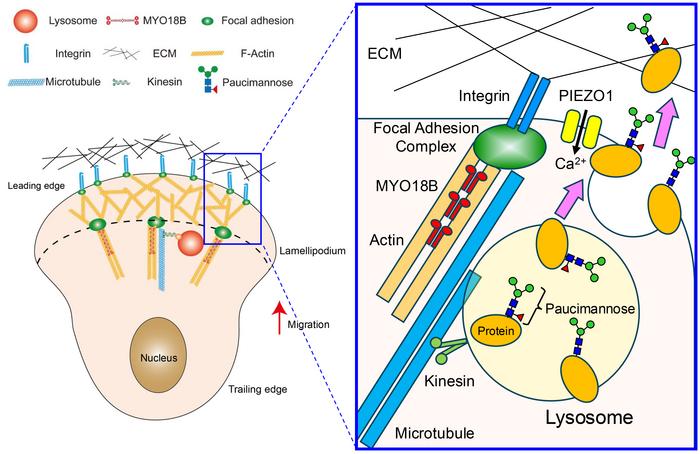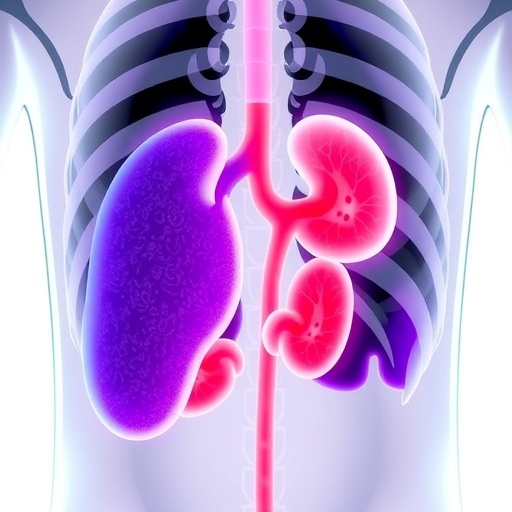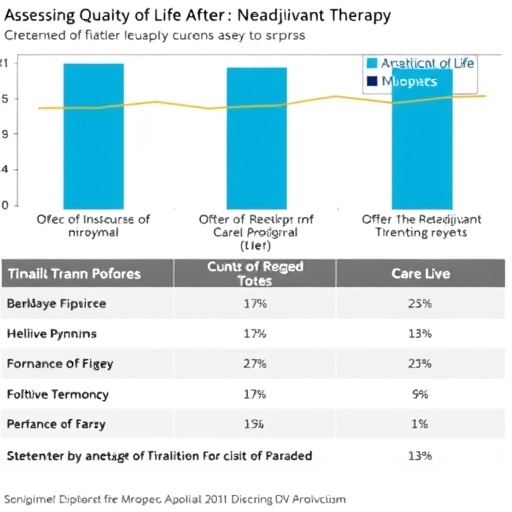
In the labyrinthine world of cancer research, the investigation into cellular mechanisms often unearths unexpected players that may influence disease progression. A recent study delineates a novel pathway involving abbreviated N-glycans, particularly focusing on a class known as paucimannose glycans. These glycans, whose presence is typically low in non-cancerous cells, have shown to be significantly upregulated in various cancer cell lines, suggesting their potential role as biomarkers or therapeutic targets. The research highlights the importance of understanding these biochemical players, as they may hold the key to unlocking new strategies in cancer treatment.
One of the overarching themes in this study is the phenomenon of lysosomal exocytosis—a cellular process through which lysosomes release their contents into the extracellular environment. The lysosome, often referred to as the cell’s waste disposal system, not only degrades but also secretes essential compounds through this process. This exocytotic mechanism has garnered attention for its dual role in cellular homeostasis and its implications in cancer biology. It is intriguing to consider how this process might contribute to cancer cell behavior, particularly in relation to adhesion and migration.
Integral to the study is the exploration of how focal adhesions, structures that anchor cells to the extracellular matrix, interplay with lysosomal exocytosis. Focal adhesions are critical for cellular communication, providing the points where intracellular signals converge and dictate cell behavior. By unveiling the relationship between focal adhesions and lysosomal exocytosis, researchers have plunged into new territory regarding our understanding of cancer cell dynamics. This relationship could be pivotal in explaining how cells not only adhere but also migrate, both of which are vital processes in cancer metastasis.
Morihisa Fujita, a leading researcher in this study, emphasizes that the connection between lysosomal exocytosis and focal adhesion dynamics challenges traditional paradigms of cancer research. The findings revealed that by regulating the release of lysosomal contents, cells can modulate their interaction with the extracellular matrix effectively. This correlation between lysosomes and focal adhesions suggests that these organelles may have roles beyond mere waste management, potentially acting as facilitators in cancer progression.
The recognition of a specific gene, MYO18B, further underscores the intricacies of this interaction. MYO18B has been identified as a pivotal regulator of lysosomal exocytosis, particularly influencing the maturation of focal adhesions. This gene, predominantly expressed in muscular tissues, highlights the evolutionary connection between muscle function and cellular processes governing migration and adhesion in cancer cells. As cells adapt to their microenvironment, the regulation of lysosomal exocytosis via MYO18B may provide a survival advantage to cancer cells as they navigate through hostile environments.
Moreover, the study articulates a critical hypothesis: the increased levels of paucimannose glycans could be a direct consequence of dysregulated lysosomal exocytosis in cancer cells. This shift may lead to substantial alterations in cell surface glycosylation patterns, promoting not only tumor growth but also invasiveness. Understanding these changes at the molecular level is essential for devising novel therapeutic approaches. By targeting this pathway, researchers may be able to stymie cancer progression or even rein in metastasis.
The implications of the research stretch beyond mere academic curiosity. With the potential to translate these findings into tangible therapeutic strategies, the study galvanizes further exploration into the role of lysosomal proteins and glycosylation patterns in cancer biology. The focus on targeting paucimannose glycans opens up pathways for the development of innovative cancer therapies, highlighting a burgeoning field within glycobiology that warrants exhaustive exploration.
Emerging techniques in live cell imaging, particularly pertinent for this type of research, allow for real-time observation of cellular behaviors that were previously difficult to elucidate. By utilizing state-of-the-art imaging modalities, researchers can now visualize and quantify the dynamics of lysosomal exocytosis and focal adhesion interactions within the heterogeneous milieu of a tumor. This advancement not only enhances the quality of data collected but also facilitates a deeper understanding of how cancer cells adapt to their surroundings in a live context.
As the biomedical research community begins to mobilize around these findings, collaborative efforts will likely pave the way for new insights into the molecular underpinnings of cancer. Institutions dedicated to glycoprotein research and cancer therapeutics are presented with a unique opportunity to connect the dots between basic science and clinical applications. Such collaboration will amplify the reach and impact of the research as findings transition from preclinical models to human clinical trials.
Looking forward, the pursuit of understanding the role of lysosomes in cancer extends beyond single molecules or pathways. It necessitates a comprehensive approach, integrating genetic, biochemical, and imaging data. The engagement of multidisciplinary teams, drawing on expertise from cellular biology, biochemistry, and clinical medicine, will be paramount in transmuting basic research into viable cancer treatments.
As we stand on the cusp of potentially groundbreaking advancements in cancer therapies inspired by this study, the next few years will be critical. The vitally intertwined relationships between lysosomal exocytosis, focal adhesion dynamics, and glycan expression offer fertile ground for new therapeutic developments. If researchers can navigate these complexities, the fight against cancer will not only gain clarity but may also receive a robust arsenal of novel therapeutic strategies that could revolutionize patient care.
Subject of Research: Cells
Article Title: MYO18B promotes lysosomal exocytosis by facilitating focal adhesion maturation
News Publication Date: 3-Jan-2025
Web References: Journal of Cell Biology
References: Not applicable
Image Credits: Morihisa Fujita, Gifu University
Keywords: Cancer, Lysosomal Exocytosis, Focal Adhesions, Paucimannose Glycans, MYO18B, Glycobiology, Tumor Progression, Live Cell Imaging, Cell Biology, Biochemistry





